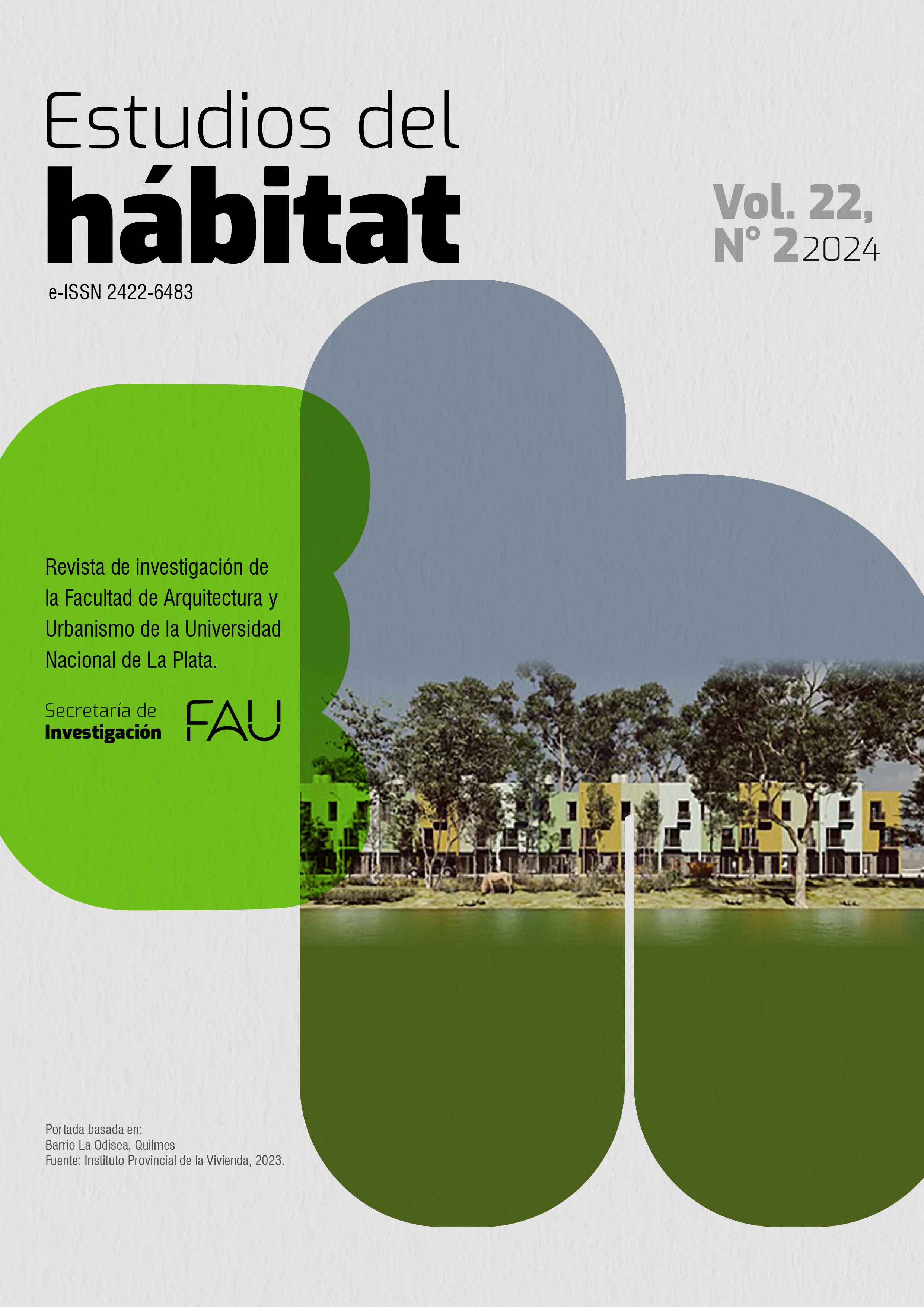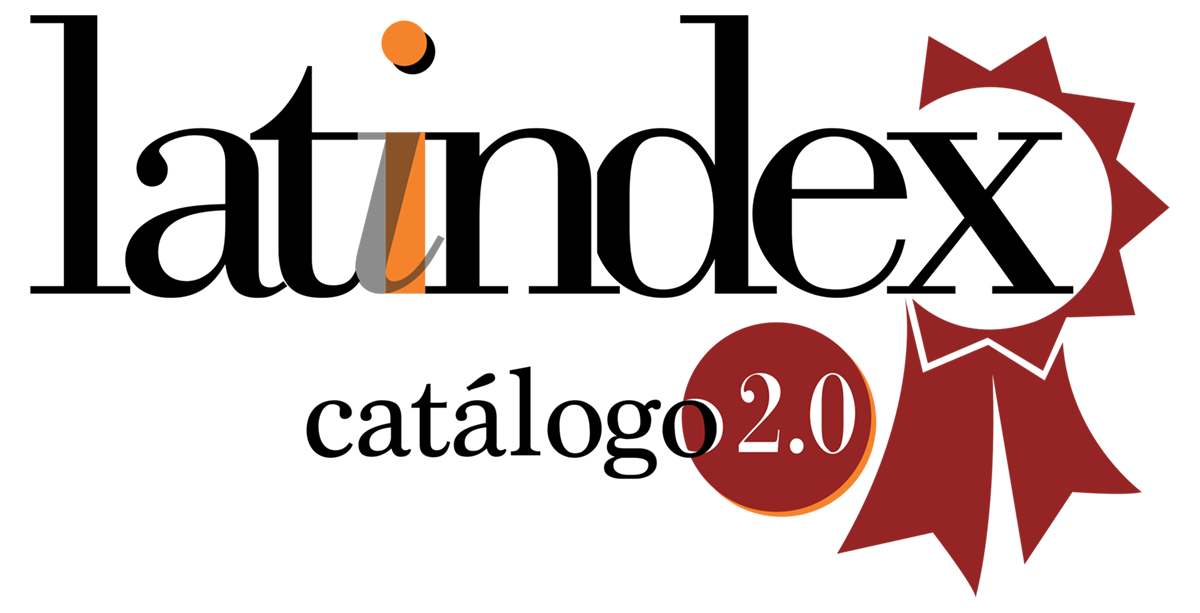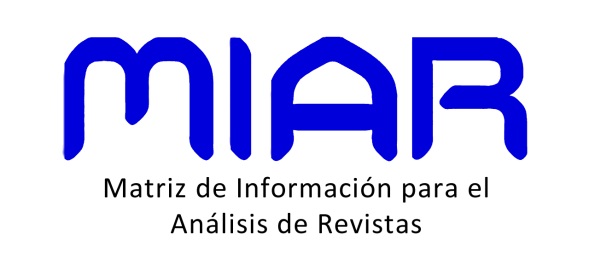Evaluation of lighting and acoustic quality in school buildings in warm temperate climate, through the application of the MECSA methodology
DOI:
https://doi.org/10.24215/24226483e141Keywords:
classrooms, lighting, acoustics, habitability, assessmentAbstract
This study aims to assess the acoustic and lighting quality using the Environmental Sustainability Evaluation and Qualification Methodology, in school spaces with a warm temperate climate. The existing criteria are considered, reviewed, and then, tow case studies from the Greater San Juan Metropolitan Area are evaluated. The results reveal that schools reach 50% and 75% of the maximum possible score, highlighting the importance of addressing the connection between habitability and aspects such as noise and lighting. It is concluded that this innovative approach contributes significantly to previous studies on the evaluation of sustainability in school buildings in the region and provides the theoretical and methodological basis for future proposals aimed at improving the level of acoustic and lighting comfort.
Downloads
Metrics
References
Alamino-Naranjo, Y. y Kuchen, E. (2021). Indicadores para evaluar el rendimiento de usuarios de oficina en clima templado cálido. Informes De La Construcción, 73(564), e420. https://doi.org/10.3989/ic.83476
Alexandra, E. N. E. y Catalina, T. (2021). Improving speech intelligibility in a high school classroom using sound absorbing panels. Romanian Journal of Acoustics and Vibration, 18(1), 40-45.
ALLPE. (2024). Diferencia entre decibelio dB y decibelio ponderado dBA. allpe.com
Acoustical performance criteria, design requirements, and guidelines for schools. (2002). American National Standards Institute.
Acoustical Performance Criteria, Design Requirements, and Guidelines for Schools. (Norma núm. S12.60). (2002). American National Standards.
Armijo, M. (2010). Lineamientos metodológicos para la construcción de indicadores de desempeño. Curso Internacional “Planificación estratégica y politicas públicas”. AECID/ILPES/CEPAL.
Chen, Y., Lau, B., Blyth, A., Schiano-Phan, R. y Yi-Kai, J. (10-12 de diciembre de 2018). Influence on Learning Efficiency from natural light in Educational Environment. Conferencia: Passive Low Energy Architecture, Hong Kong, China. https://westminsterresearch.westminster.ac.uk/item/q9839/influence-on-learning-efficiency-from-natural-light-in-educational-environment
Cotana, F., Asdrubali, F., Arcangeli, G., Luzzi, S., Ricci, G., Busa, L. y Cerini, L. (2023). Extra-Auditory Effects from Noise Exposure in Schools, Results of Nine Italian Case Studies. Acoustics 5(1), 216-241. https://doi.org/10.3390/acoustics5010013
Enoch, J., Jones, L., Taylor, D. J., Bronze, C., Kirwan, J. F., Jones, P. R. y Crabb, D. P. (2020). How do different lighting conditions affect the vision and quality of life of people with glaucoma? A systematic review. Eye, 34(1), 138-154. https://doi.org/10.1038/s41433-019-0679-5
Heindri, N., Dewi, O. C. e Ismoyo, A. D. (18 de noviembre de 2021). Lighting system evaluations of working space in educational building, Universitas Indonesia. IOP Conference Series: Earth and Environmental Science. https://doi.org/10.1088/1755-1315/998/1/012029
Hoang, P. N., Solina, A. M., Samara, M., Maglente, S. S., Shannawi, S., Luna, A. R. F. y Olvida, C. F. (2022). The influence of lighting, noise, and temperature on the academic performance of students amid covid-19 pandemic. International Journal of Learning, Teaching and Educational Research, 21(9), 415-440. https://doi.org/10.26803/ijlter.21.9.23
Hussan, S., Hassan, N. A., Mansy, M. A. H. y Elshamly, M. A. M. (2022). Effect of noise on school environment and its relationship with each of audio and visual perception and attitudes of students (case study of some primary Schools in Giza Governorate). Alexandria Science Exchange Journal, 43(3), 907-935. https://doi.org/10.21608/asejaiqjsae.2022.252599
Instituto Argentino de Normalización y Certificación. (1994). Ruidos molestos al vecindario. (Norma núm. 4062).
Instituto Argentino de Normalización y Certificación. (2011). Acústica. Medición de parámetros acústicos en recintos. Parte 2 – Tiempo de reverberación de recintos comunes. (Norma núm. 4109).
International Organization for Standardization. (2008). Acoustics—Measurements of room acoustics parameters - Part 2: Reverberation time in ordinary rooms. (Norma núm. 3382).
Karlsson, T., Kjellander, J., Machado, A., Strandberg, O., Götlind, P. y Karlsson, R. (21-23 de septiembre de 2022). The school lighting innovation dilemma. IOP Conference Series: Earth and Environmental Science, Copenague, Dinamarca. https://doi.org/10.1088/1755-1315/1099/1/012031
Kudryashova, O. B., Muravlev, E. V., Antonnikova, A. A. y Titov, S. S. (2021). Propagation of viral bioaerosols indoors. PloS One, 16(1), e0244983. https://doi.org/10.1371/journal.pone.0244983
Kwong, Q. J. (2020). Light level, visual comfort and lighting energy savings potential in a green-certified high-rise building. Journal of Building Engineering, 29, 101198. https://doi.org/10.1016/j.jobe.2020.101198
Lauría, A., Secchi, S. y Vessella, L. (2020). Acoustic comfort as a salutogenic resource in learning environments—A proposal for the design of a system to improve the acoustic quality of classrooms. Sustainability, 12(22), 9733. https://doi.org/10.3390/su12229733
Ley 19587 de 1972. Higiene y seguridad en el trabajo. 21 de abril de 1972. D.O. 1972-04-28.
Ley 24.557 de 1995. Riesgos del Trabajo. 3 de octubre 1995. D.O. 1995-10-04.
Magero, C. V., Nyamari, J. y Mutisya, R. (2023). Visual Comfort and Discomfort in Public Boarding Secondary Schools in Nairobi City County, Kenya. East African Journal of Health and Science, 6(1), 62-84. https://doi.org/10.37284/eajhs.6.1.1123
Mamat, N. I., Amil, N., Mohd Hanif, M. H., Zuknik, M. H., Norashiddin, F. A. y Jaafar, M. H. (2022). Noise Exposure Assessment at a Secondary School in a City of Pulau Pinang, Malaysia. International Journal of Environmental Health Research, 32(11), 2547-2561. https://doi.org/10.1080/09603123.2021.1976735
Mansouri, K., Sriti, L. y Guedouh, M. S. (2022). Post-Occupancy Evaluation of Thermal Comfort Sensation of Pupils in School Establishments under Hot Arid Climate Conditions. Technium Social Science Journal, 34,180.
Ministerio de Educación. (1998). Criterios y Normativa Básica de Arquitectura Escolar. Dirección de Infraestructura. Gobierno de la Nación Argentina.
Montiel, I., Mayoral, A. M., Navarro Pedreño, J. y Maiques, S. (2019). Acoustic comfort in learning spaces: Moving towards sustainable development goals. Sustainability, 11(13), 3573. https://doi.org/10.3390/su11133573
Munawaroh, A. S. y Christina, C. (2021). A Field Measurement of Noise Comfort Classroom in Xaverius Pringsewu Senior High School. MARKA, Media Arsitektur dan Kota, Jurnal Ilmiah Penelitian, 5(1), 27-38. https://doi.org/10.33510/marka.2021.5.1.27-38
Norazman, N., Ani, A. I. C., Jaâ, N. H. y Khoiry, M. A. (2018). Indoor Lighting in Classroom Environment Influences on Students Learning Performance. The Journal of Social Sciences Research, 6, 986-990. https://doi.org/10.32861/JSSR.SPI6.986.990
Ochiabuto, O. M. T. B., Abonyi, I. C., Ofili, R. N., Obiagwu, O. S., Ede, A. O., Okeke, M. y Eze, P. M. (2021). Assessment of Noise Levels in Primary and Secondary Schools in Nnewi, Anambra State. European Journal of Environment and Public Health, 5(1). https://doi.org/10.29333/EJEPH/8425
Oliveira Rodrigues, M. y de Oliveira Scalise, W. (2022). The importance of lighting in architectural work environment projects. Journal of Interdisciplinary Debates, 3(01).
Paterlini, L. y Garzón, B. S. (2018). Confort acústico en aulas de escuela en Tucumán, Argentina: Análisis, evaluación y concienciación. XXVIII Encontro da Sobrac, Porto Alegre. https://doi.org/10.17648/sobrac-87078
Pérez Vicharra, C. I. (2023). Niveles de ruido ambiental en el horario laboral de la municipalidad distrital de Ate de setiembre a diciembre 2021. https://hdl.handle.net/20.500.14292/2374
Ré, M. G. (6-8 de septiembre de 2017). Arquitectura escolar. Análisis del Programa Nacional 700 Escuelas en la Provincia de San Juan. Actas del XXI Congreso ARQUISUR. Universidad Nacional de San Juan. San Juan, Argentina.
Ré, M. G. y Bianchi, M. F. (2020). Metodología de evaluación y calificación de la sustentabilidad ambiental y la eficiencia energética en edificios escolares existentes. Energías Renovables y Medio Ambiente, 45, 39-49.
Ré, M. G. y Michaux, M. C. (2023). Arquitectura escolar del Plan Quinquenal en la Provincia de San Juan. PENSUM, 9(11), 111-125. http://dx.doi.org/10.59047/2469.0724
Schwela, D. H. (2000). The World Health Organization guidelines for environmental noise. Noise News International, 8(1), 9-22. https://doi.org/10.3397/1.3703044
Xu, J., Liu, M., Li, L. y Xia, Z. (2024). Effects of environmental lighting on students’ sleep, alertness and mood: A field study in a Chinese boarding school. Lighting Research & Technology, 56(2), 185-206. https://doi.org/10.1177/14771535231165263
Yang, W. y Jeon, J. Y. (2020). Effects of correlated colour temperature of LED light on visual sensation, perception, and cognitive performance in a classroom lighting environment. Sustainability, 12(10), 4051. https://doi.org/10.3390/su12104051
Downloads
Published
How to Cite
Issue
Section
License
Copyright (c) 2024 Yesica Alamino Naranjo, Guillermina Ré

This work is licensed under a Creative Commons Attribution-NonCommercial-ShareAlike 4.0 International License.
Acorde a estos términos, el material se puede compartir (copiar y redistribuir en cualquier medio o formato) y adaptar (remezclar, transformar y crear a partir del material otra obra), siempre que a) se cite la autoría y la fuente original de su publicación (revista y URL de la obra), b) no se use para fines comerciales y c) se mantengan los mismos términos de la licencia.








.jpg)

















